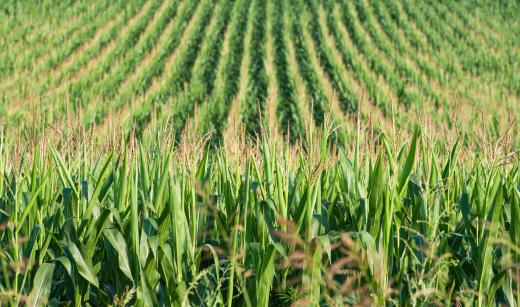Conservation agriculture, also known as CA, is a form of farming meant to ensure soil health, promote sustainable farming, and prevent the damaging overuse of land. Gaining popularity in the 21st century, conservation agriculture aims to help farmers keep land healthy and productive by maintaining sustainable growing methods. There are several strategies to ensuring the health and continued fertility of land through conservation agriculture, many of which are outlined in guidelines from the Food and Agricultural Organization of the United Nations.
One of the most important principles that forms the backbone of CA is reducing soil damage by discouraging tilling. In the tilling process, the soil is turned over by hand or by machine in an attempt to bring nutrients to the surface as seeds are planted. While in the short term this may benefit the current crops, many scientists suggest that it leads to long- term degradation of the soil, eventually leaving it unusable. By refraining from tilling, organic soil matter may actual benefit as crop fragments form a protective mulch over the soil.

A second major factor in conservation agriculture is the planting of cover crops. When feasible, these crops prevent soil erosion by protecting the top soil from wind, sun, and rain. Cover crops also provide nutrients to the organisms in the soil, which in turn feed the crops. Although the UN guidelines regarding CA acknowledge that some application of pesticides may be necessary for commercial crops, it is also recommended that farmers minimize herbicide use to protect the natural biodiversity of the soil and local environment. By protecting the soil and ensuring a healthy, thriving bio-system, many experts believe that crops are more likely to flourish.

The third principle touted by the UN guidelines for conservation agriculture regards the rotation of crops. Repeatedly planting the same land with the same crop can lead to nutrient depletion in the soil. By cycling crops that need different nutrients through the same field, the soil has time to rest and replenish its nutrient stores.
Some CA organizations also promote reserving a portion of land to encourage the growth of a natural ecosystem. By keeping some land free from agricultural pursuits, the surrounding farmland will have a proper balance of wildlife, insects, and native plants. Although saving land may not be a viable option in many cases, some experts suggest that proper conservation efforts such as natural land reserves will help convert farming operations from environmentally destructive to environmentally aware.

